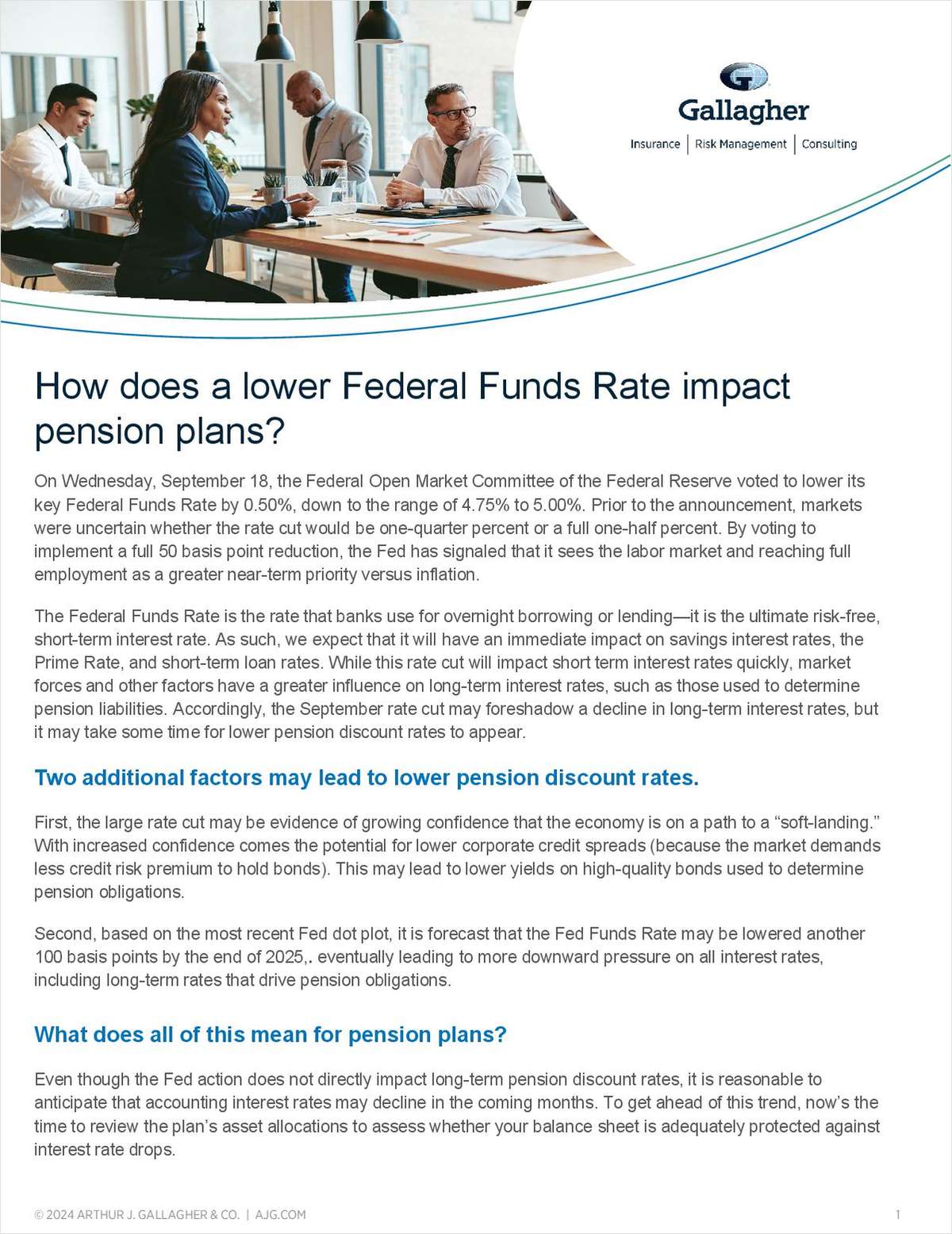Reports continue to relate the fall in funded status of U.S. corporate pensions, with Milliman Inc. reporting a $46 billion decrease in June — thanks likely to Brexit — and the BNY Mellon Institutional Scorecard reporting a 4.0 percent surge in liabilities during the month, along with heightened volatility.
Mercer had already put a 3 percent drop in funded status among the plans of S&P 1500 companies down to Brexit, and Milliman’s latest pension funding index chalked up that $46 billion drop primarily to a $54 billion increase in pension liabilities. Investment gains, Milliman said, partially helped to offset the funded status decline.
The funded ratio for the 100 largest U.S. corporate pension plans, it said, decreased from 77.5 percent to 75.7 percent at the end of June. Having passed the midpoint of 2016, the funded status deficit has ballooned to $447 billion, a $140 billion increase over the past six months, the firm said. Why? A combination of Brexit and an overall discount rate drop of 71 basis points.
But Milliman doesn’t see the whole picture as bleak. “Plans with fiscal years ending June 30th had a late-breaking surprise with the passage of Brexit. Falling 23 basis points, U.S. discount rates certainly weren’t immune to the Brexit pain,” Zorast Wadia, coauthor of the Milliman 100 PFI, said in a statement.
Wadia added, “The silver lining here lies with fixed income investments, which benefited from the discount rate decline. Those with heavy allocations towards fixed income are seeing investment gains.”
In fact, Milliman projects “under an optimistic forecast with rising interest rates (reaching 3.75 percent by the end of 2016 and 4.35 percent by the end of 2017) and asset gains (11.2 percent annual returns), the funded ratio would climb to 81 percent by the end of 2016 and 93 percent by the end of 2017.” However, it also cautioned that, with a pessimistic forecast that sees a 3.15 percent discount rate at the end of 2016, 2.55 percent by the end of 2017 and 3.2 percent annual returns, the funded ratio would decline to 72 percent by the end of 2016 and 66 percent by the end of 2017.
BNY Mellon, for its part, reported that the funded status of typical U.S. corporate defined benefit plans fell by 2.1 percent in June to 78.1 percent. “The slide,” it said in a statement, “represents the lowest month-end funded status yet for U.S. corporate DB plans in 2016. Asset growth of 1.5 percent was not enough for plan sponsors to outpace rising liabilities — which increased by 4.0 percent in June, after the EU Referendum vote shook global markets.”
Year-to-date, for typical U.S. corporate DB plans, BNY Mellon said that assets are up 6.5 percent, compared to a 13.85 percent increase in liabilities for plan sponsors. On a 12-month basis, liabilities outpaced asset growth more than fourfold, increasing 16.96 percent versus 4.07 percent, respectively. It estimated that the S&P 500 pension deficit has increased by $61 billion in June, to $495 billion.
Complete your profile to continue reading and get FREE access to BenefitsPRO, part of your ALM digital membership.
Your access to unlimited BenefitsPRO content isn’t changing.
Once you are an ALM digital member, you’ll receive:
- Breaking benefits news and analysis, on-site and via our newsletters and custom alerts
- Educational webcasts, white papers, and ebooks from industry thought leaders
- Critical converage of the property casualty insurance and financial advisory markets on our other ALM sites, PropertyCasualty360 and ThinkAdvisor
Already have an account? Sign In Now
© 2024 ALM Global, LLC, All Rights Reserved. Request academic re-use from www.copyright.com. All other uses, submit a request to [email protected]. For more information visit Asset & Logo Licensing.








